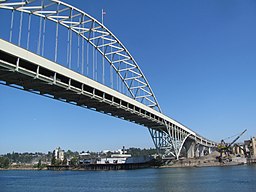Drafting
Developing Relationships between Ideas

So you have a main idea, and you have supporting ideas, but how can you be sure that your readers will understand the relationships between them? How are the ideas tied to each other? One way to emphasize these relationships is through the use of clear transitions between ideas. Like every other part of your essay, transitions have a job to do. They form logical connections between the ideas presented in an essay or paragraph, and they give readers clues that reveal how you want them to think about (process, organize, or use) the topics presented.
Why are Transitions Important?
Transitions signal the order of ideas, highlight relationships, unify concepts, and let readers know what’s coming next or remind them about what’s already been covered. When instructors or peers comment that your writing is choppy, abrupt, or needs to “flow better,” those are some signals that you might need to work on building some better transitions into your writing. If a reader comments that she’s not sure how something relates to your thesis or main idea, a transition is probably the right tool for the job.
When Is the Right Time to Build in Transitions?
There’s no right answer to this question. Sometimes transitions occur spontaneously, but just as often (or maybe even more often) good transitions are developed in revision. While drafting, we often write what we think, sometimes without much reflection about how the ideas fit together or relate to one another. If your thought process jumps around a lot (and that’s okay), it’s more likely that you will need to pay careful attention to reorganization and to providing solid transitions as you revise.
When you’re working on building transitions into an essay, consider the essay’s overall organization. Consider using reverse outlining and other organizational strategies presented in this text to identify key ideas in your essay and to get a clearer look at how the ideas can be best organized. See the “Reverse Outlining” section in the “Revision” portion of this text, for a great strategy to help you assess what’s going on in your essay and to help you see what topics and organization are developing. This can help you determine where transitions are needed.
Let’s take some time to consider the importance of transitions at the sentence level and transitions between paragraphs.
Sentence-Level Transitions
Transitions between sentences often use “connecting words” to emphasize relationships between one sentence and another. A friend and coworker suggests the “something old something new” approach, meaning that the idea behind a transition is to introduce something new while connecting it to something old from an earlier point in the essay or paragraph. Here are some examples of ways that writers use connecting words (highlighted with red text and italicized) to show connections between ideas in adjacent sentences:
To Show Similarity
When I was growing up, my mother taught me to say “please” and “thank you” as one small way that I could show appreciation and respect for others. In the same way, I have tried to impress the importance of manners on my own children.
Other connecting words that show similarity include also, similarly, and likewise.
To Show Contrast
Some scientists take the existence of black holes for granted; however, in 2014, a physicist at the University of North Carolina claimed to have mathematically proven that they do not exist.
Other connecting words that show contrast include in spite of, on the other hand, in contrast, and yet.
To Exemplify
The cost of college tuition is higher than ever, so students are becoming increasingly motivated to keep costs as low as possible. For example, a rising number of students are signing up to spend their first two years at a less costly community college before transferring to a more expensive four-year school to finish their degrees.
Other connecting words that show example include for instance, specifically, and to illustrate.
To Show Cause and Effect
Where previously painters had to grind and mix their own dry pigments with linseed oil inside their studios, in the 1840s, new innovations in pigments allowed paints to be premixed in tubes. Consequently, this new technology facilitated the practice of painting outdoors and was a crucial tool for impressionist painters, such as Monet, Cezanne, Renoir, and Cassatt.
Other connecting words that show cause and effect include therefore, so, and thus.
To Show Additional Support
When choosing a good trail bike, experts recommend 120–140 millimeters of suspension travel; that’s the amount that the frame or fork is able to flex or compress. Additionally, they recommend a 67–69 degree head-tube angle, as a steeper head-tube angle allows for faster turning and climbing.
Other connecting words that show additional support include also, besides, equally important, and in addition.
A Word of Caution
Single-word or short-phrase transitions can be helpful to signal a shift in ideas within a paragraph, rather than between paragraphs (see the discussion below about transitions between paragraphs). But it’s also important to understand that these types of transitions shouldn’t be frequent within a paragraph. As with anything else that happens in your writing, they should be used when they feel natural and feel like the right choice. Here are some examples to help you see the difference between transitions that feel like they occur naturally and transitions that seem forced and make the paragraph awkward to read:
Too Many Transitions: The Impressionist painters of the late 19th century are well known for their visible brush strokes, for their ability to convey a realistic sense of light, and for their everyday subjects portrayed in outdoor settings. In spite of this fact, many casual admirers of their work are unaware of the scientific innovations that made it possible this movement in art to take place. Then, In 1841, an American painter named John Rand invented the collapsible paint tube. To illustrate the importance of this invention, pigments previously had to be ground and mixed in a fairly complex process that made it difficult for artists to travel with them. For example, the mixtures were commonly stored in pieces of pig bladder to keep the paint from drying out. In addition, when working with their palettes, painters had to puncture the bladder, squeeze out some paint, and then mend the bladder again to keep the rest of the paint mixture from drying out. Thus, Rand’s collapsible tube freed the painters from these cumbersome and messy processes, allowing artists to be more mobile and to paint in the open air.
Subtle Transitions that Aid Reader Understanding: The Impressionist painters of the late 19th century are well known for their visible brush strokes, for their ability to convey a realistic sense of light, for their everyday subjects portrayed in outdoor settings. However, many casual admirers of their work are unaware of the scientific innovations that made it possible for this movement in art to take place. In 1841, an American painter named John Rand invented the collapsible paint tube. Before this invention, pigments had to be ground and mixed in a fairly complex process that made it difficult for artists to travel with them. The mixtures were commonly stored in pieces of pig bladder to keep the paint from drying out. When working with their palettes, painters had to puncture the bladder, squeeze out some paint, and then mend the bladder again to keep the rest of the paint mixture from drying out. Rand’s collapsible tube freed the painters from these cumbersome and messy processes, allowing artists to be more mobile and to paint in the open air.
Transitions between Paragraphs and Sections
It’s important to consider how to emphasize the relationships not just between sentences but also between paragraphs in your essay. Here are a few strategies to help you show your readers how the main ideas of your paragraphs relate to each other and also to your thesis.
Use Signposts
Signposts are words or phrases that indicate where you are in the process of organizing an idea; for example, signposts might indicate that you are introducing a new concept, that you are summarizing an idea, or that you are concluding your thoughts. Some of the most common signposts include words and phrases like first, then, next, finally, in sum, and in conclusion. Be careful not to overuse these types of transitions in your writing. Your readers will quickly find them tiring or too obvious. Instead, think of more creative ways to let your readers know where they are situated within the ideas presented in your essay. You might say, “The first problem with this practice is…” Or you might say, “The next thing to consider is…” Or you might say, “Some final thoughts about this topic are….”
Use Forward-Looking Sentences at the End of Paragraphs
Sometimes, as you conclude a paragraph, you might want to give your readers a hint about what’s coming next. For example, imagine that you’re writing an essay about the benefits of trees to the environment and you’ve just wrapped up a paragraph about how trees absorb pollutants and provide oxygen. You might conclude with a forward-looking sentence like this: “Trees benefits to local air quality are important, but surely they have more to offer our communities than clean air.” This might conclude a paragraph (or series of paragraphs) and then prepare your readers for additional paragraphs to come that cover the topics of trees’ shade value and ability to slow water evaporation on hot summer days. This transitional strategy can be tricky to employ smoothly. Make sure that the conclusion of your paragraph doesn’t sound like you’re leaving your readers hanging with the introduction of a completely new or unrelated topic.
Use Backward-Looking Sentences at the Beginning of Paragraphs
Rather than concluding a paragraph by looking forward, you might instead begin a paragraph by looking back. Continuing with the example above of an essay about the value of trees, let’s think about how we might begin a new paragraph or section by first taking a moment to look back. Maybe you just concluded a paragraph on the topic of trees’ ability to decrease soil erosion and you’re getting ready to talk about how they provide habitats for urban wildlife. Beginning the opening of a new paragraph or section of the essay with a backward-looking transition might look something like this: “While their benefits to soil and water conservation are great, the value that trees provide to our urban wildlife also cannot be overlooked.”
Evaluate Transitions for Predictability or Conspicuousness
Finally, the most important thing about transitions is that you don’t want them to become repetitive or too obvious. Reading your draft aloud is a great revision strategy for so many reasons, and revising your essay for transitions is no exception to this rule. If you read your essay aloud, you’re likely to hear the areas that sound choppy or abrupt. This can help you make note of areas where transitions need to be added. Repetition is another problem that can be easier to spot if you read your essay aloud. If you notice yourself using the same transitions over and over again, take time to find some alternatives. And if the transitions frequently stand out as you read aloud, you may want to see if you can find some subtler strategies.
 Exercise: Try Out Some New Transition Strategies
Exercise: Try Out Some New Transition Strategies
Choose an essay or piece of writing, either that you’re currently working on, or that you’ve written in the past. Identify your major topics or main ideas. Then, using this chapter, develop at least three examples of sentence-level transitions and at least two examples of paragraph-level transitions. Share and discuss with your classmates in small groups, and choose one example of each type from your group to share with the whole class. If you like the results, you might use them to revise your writing. If not, try some other strategies.

